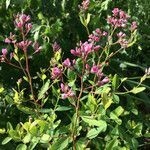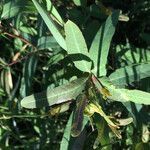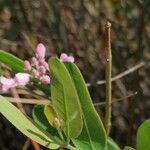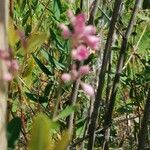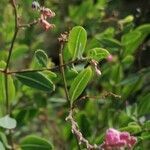A erect herb. It has milky sap. It grows 1-2 m high. It has rhizomes or underground stems that are pink. The branches are purple-red. The leaves are opposite. They are narrowly sword shaped and 1-5 cm long by 1-2 cm wide. The flowers are pink or purple. They are in clusters at the ends of branches. The fruit are 2 long follicles 8-15 cm long and 2-3 mm wide. There are many seeds.
